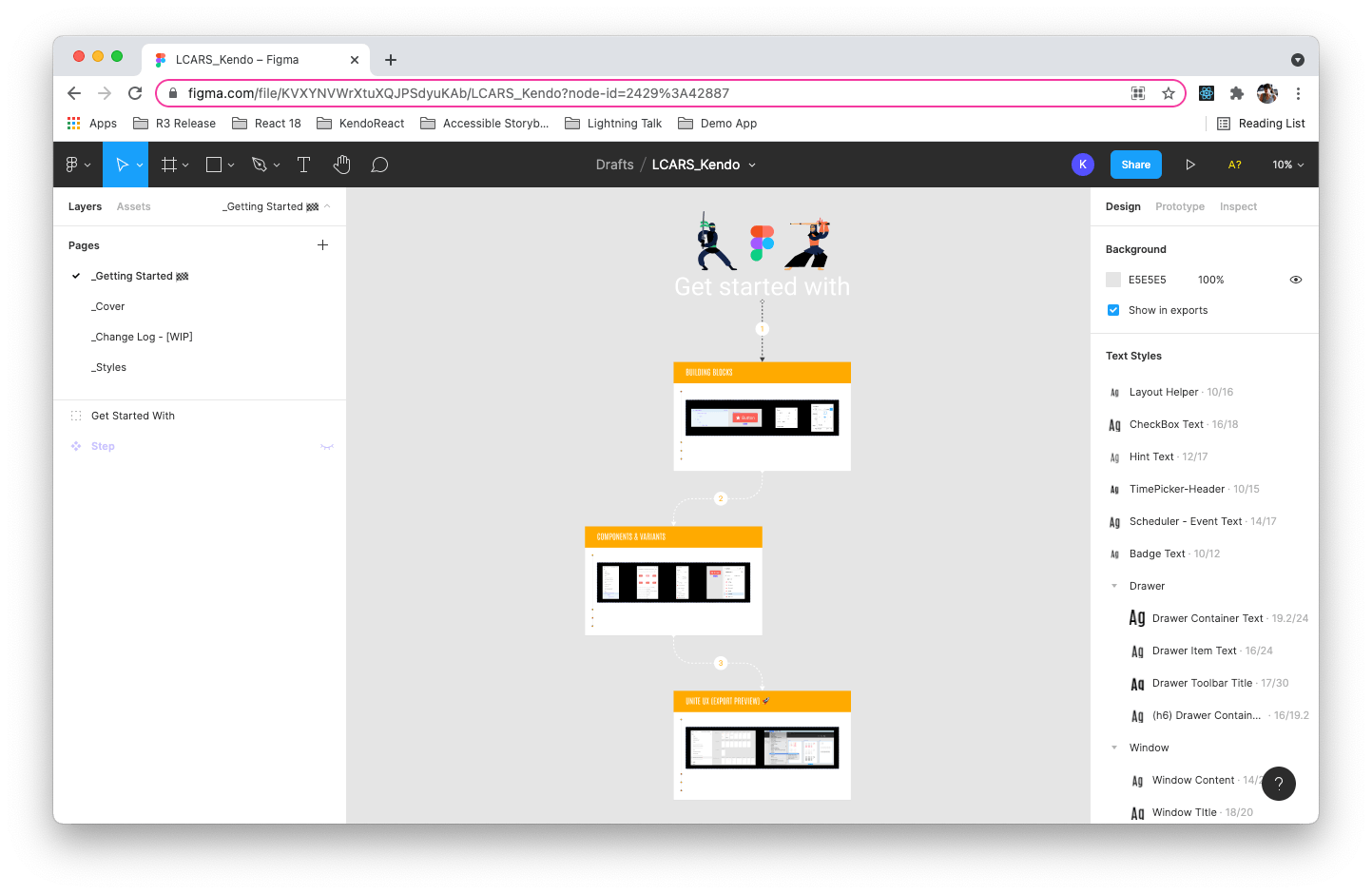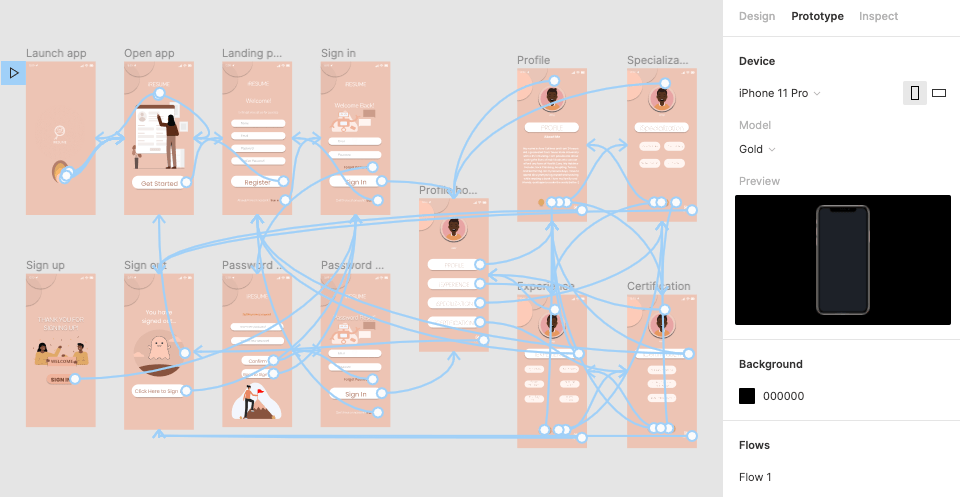Figma for Developers
Last updated: Jul 21 2021
If you're a developer who works with designers, then you're already familiar with the infamous "handoff" – that point in the workflow when we start turning wireframes and mockups into code. Even if you're not personally familiar with the process, it's probably unsurprising to hear that this is often a real pain point. This pain can be lessened, however, when both sides have an understanding of what the other will be looking for in the handoff process.
Designers are expected to have a pretty thorough understanding of the front-end web: HTML elements, the CSS box model, how responsive resizing works, component-based structure, etc. And yet, when we flip the script, developers are rarely expected to have an understanding of design basics – what's up with that?
Teams work better and create better products when both parties have a high level understanding of each others' tools and priorities. Not to mention all the ways having access to the design source files can make your own job easier.
With that in mind, I'd love to introduce my developer friends to Figma, one of the most popular and widely-used UI design tools. It's free for individual use, so I'd encourage you to go make an account and start playing around! It's the best way to learn.
Like any specialized software, a Figma file can be a little overwhelming to navigate if you're not familiar with it. So let's start from the top and take a look at the the basics, along with the Figma features that will be most useful for developers.
Figma File Organization
Figma files are organized by Pages (think screens of an application), which each contain Frames (subpages, often used to organize mockups of Pages in various user interaction states). Each Frame is made up of Elements – shapes, text, vectors, etc. Elements (or groups of Elements) can be saved as reusable Components. Elements are customized with Styles, like colors or fonts. Styles (or groups of Styles) can be saved as Design Tokens and organized into shareable Libraries for easy reuse.

Getting Oriented
When you first open a Figma file, this is what you'll see:
- The center panel shows the current Page contents. Clicking on any Element will select it, in both the left and right sidebars.
- The left sidebar is where you'll find the document structure, organized into a nested and layered view.
- The right sidebar has three main sections – Design, Prototype, and Inspect.
- Design allows the designer to adjust the Styles on each Element. The contents of this tab will change based on which Element is selected (colors, borders, etc. for shapes, font choices, sizes, etc. for text).
- Prototype allows the designer to hook all the Frames together into a clickable prototype.
- Inspect summarizes the selected content into CSS properties and code.

If you want to take a closer look at the details of a mockup, you can turn on the Grids with Ctrl+G, which will help you get a feel for the spacing and structure of what you're building. You can also toggle on Rulers with Shift+R, and show spacing values between elements by selecting the Element and holding down the Option key while you hover over the items around it.
Exporting Assets
Alright, so you've explored the file and you feel like you've got a solid understanding of what needs to be built and why. Time to start writing some code. Good news – Figma also makes this easier!
For defining your high-level styles, you'll want the contents of the Libraries – those Design Tokens are the recurring CSS values that you'll want to turn into variables and/or assign to properties in your global stylesheet. If you select the highest level Page from the left-hand sidebar, the Design Tokens will appear in the right-hand sidebar. You can click on the knobs icon of each one to inspect it and see all the details you'll need to recreate it in your CSS files.
Unfortunately, there's no native way in Figma for you to export those Libraries...fortunately, ThemeBuilder Pro makes it a piece of cake! If you download the ThemeBuilder plugin, you can export all the data from the Figma file into ThemeBuilder, and then export again from ThemeBuilder. That export package will include a ton of useful SASS files (one of which being '_tokens.scss') that you can add directly to your project. Boom, done.
Once you get past the high-level styles and into the nitty-gritty, that's where Dev Mode is going to be your new best friend. By toggling the switch with the </> icon in the upper right hand corner, you can turn on Dev Mode and start looking at designs from a development perspective.
Much like the inspect tool in every major browser, Dev Mode lets you drill down on a single Element and get all the details, helpfully formatted into CSS and with a quick copy option. There are also a number of Plugins available in the Community that can integrate tools from various other software you might be using as part of the development or project management process – including Storybook, GitHub, Anima, Jira, and more! While not as flashy as some of the other features, Dev Mode also allows designers to mark various sections as “ready for development” and allows developers to see previous versions to easily identify what needs to be updated. It’s not quite the same level of granular version control that we’re used to with something like git, but it’s still incredibly helpful!
Finally, if there are any images or custom icons in the mockup, you'll want those exported as well. Ideally, your designers will have marked the assets you need as Exportable – if this is the case, then you can select the Page or Frame that you want to export items from, open the Export Panel with Cmd+Shift+E, and export everything that they've marked from one place. If not, you'll have to export assets one at a time. Select whatever you want to export and scroll down in the right sidebar until you see the Export section. There, you can customize your size and export file type (PNG, SVG, JPG, or PDF), and click the Export button right below.
Ease the pain of the handoff
The design / dev handoff doesn't have to be a pain point if both groups are willing to meet each other halfway. There are plenty of great products that have taken strides towards bridging this gap, but at the end of the day, even the best tool is only useful if you have a contextual understanding of what you're doing with it. You don't need to have a deep understanding of design concepts to benefit from getting comfortable with Figma. When developers are empowered to explore and work with the actual design source files, everybody wins!
◀ Back to all blogs